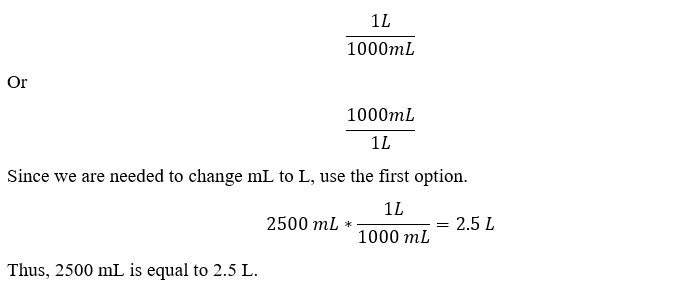A bucket can hold 2500 mL. How many L can the bucket hold?
A. 0.25 mL
B. 25 mL
C. 2.5 L
D. 250 L
Answer Explanation:
Explanation: We know that 1 L=1000 mL and to change between L and mL we use the following two options

Therefore, the Correct Answer is C.


 55=43/55
55=43/55
